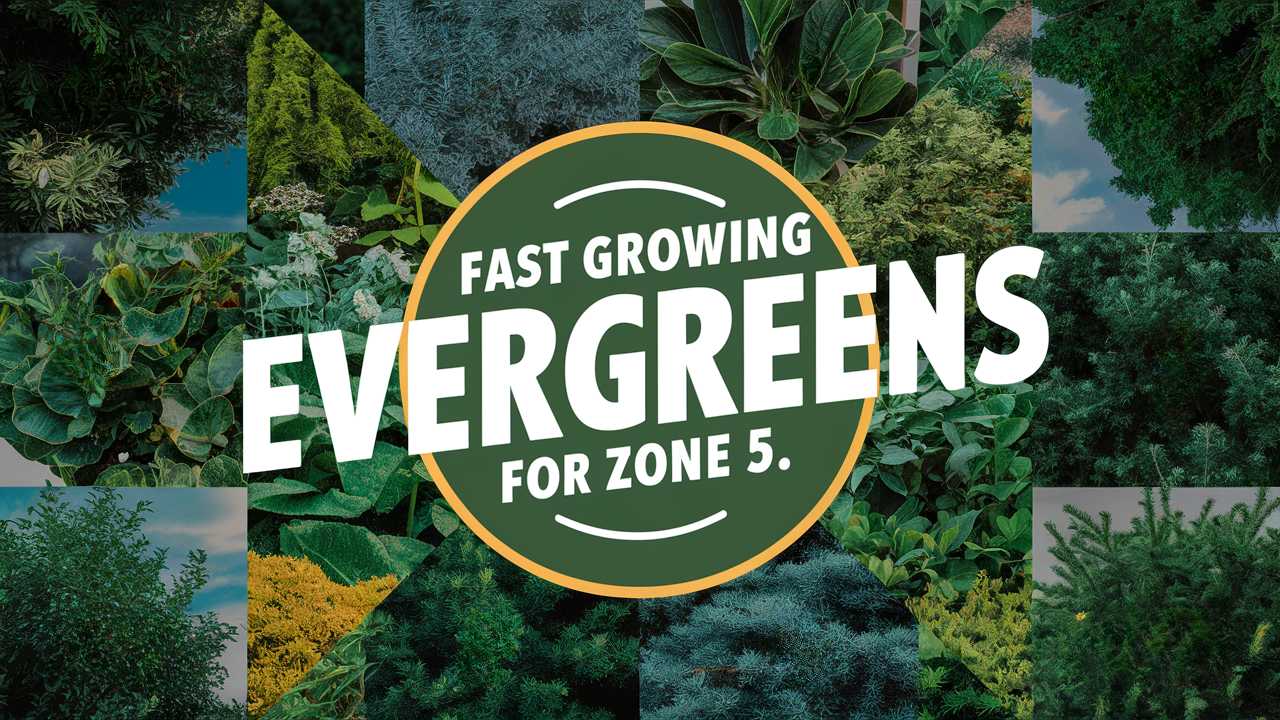In this guide, we’ll explore ten fast-growing evergreen trees and shrubs suitable for zone 5, offering distinctive characteristics, benefits, and detailed information about their adaptability to this specific climate.
Eastern White Pine
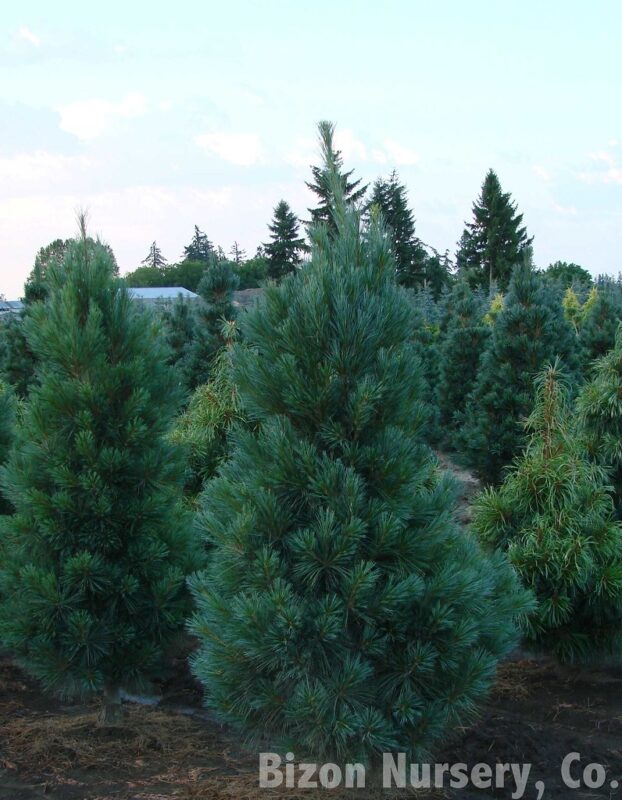
One of the standout choices for zone 5 is the Eastern White Pine (Pinus strobus). This majestic tree is known for its tall, graceful form and is often used as a focal point in landscapes. Eastern White Pines can grow up to 2 feet per year, making them one of the fastest-growing conifers available in this hardiness zone. With a mature height potentially reaching between 50 to 80 feet, their soft, flexible needles create a gentle, airy feel, while the long, straight trunk provides an elegant silhouette that can enhance any property.
Adaptability is one of the key strengths of the Eastern White Pine. These pines thrive in various soil types, particularly preferring well-drained acidic soils. In zone 5, where temperatures can range from -20°F to -10°F in winter, the Eastern White Pine displays impressive cold hardiness. Its ability to tolerate drought conditions once established is another plus, making it suitable for homeowners in regions experiencing less consistent rainfall. Additionally, these trees attract wildlife like birds and squirrels, adding life to your garden and supporting local ecology.
Thuja Green Giant
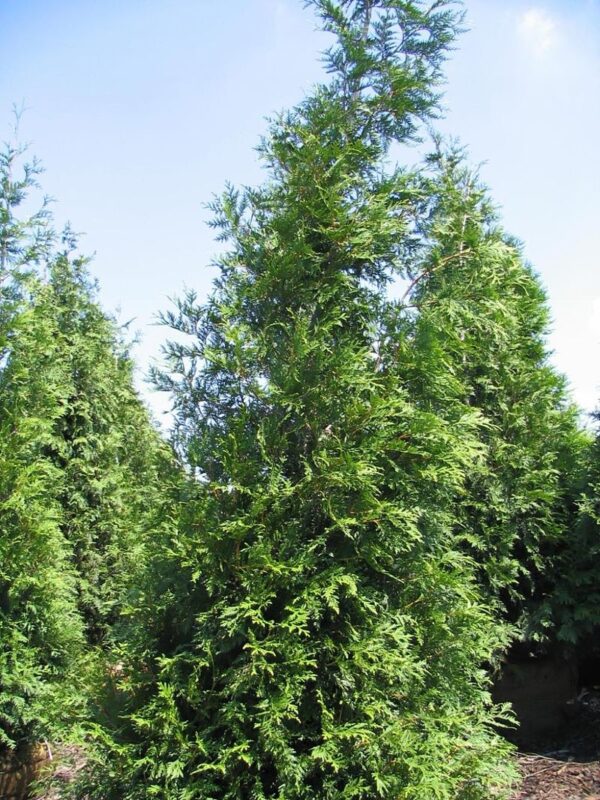
Thuja Green Giant is an excellent choice for homeowners looking for a fast-growing privacy screen or windbreak. This hybrid arborvitae can grow up to 3 feet per year, making it one of the most productive evergreens available. Under optimal conditions, it can reach heights of 40 to 60 feet and can grow up to 12 feet wide. With its rich, vibrant green foliage that maintains its color year-round, the Thuja Green Giant forms a dense and appealing wall of greenery.
Adaptable to a wide range of environmental conditions, this tree thrives in different soil types, from sandy loams to clay. In zone 5, where the winter can bring significant snowfall, this variety of arborvitae is particularly resilient against snow loads without breaking or bending. It’s also resistant to many pests and diseases, ensuring that your hedge remains healthy with minimal maintenance. An added bonus is its ability to grow in full sun to partial shade, making it versatile for various landscape situations. With its rapid growth rate and durability, the Thuja Green Giant will provide privacy and beauty for years to come, making it a top choice for many homeowners.
Norway Spruce
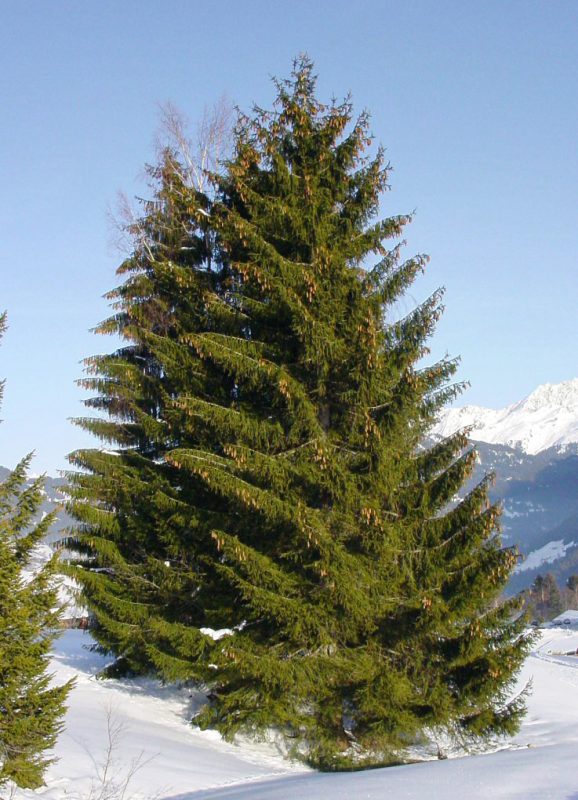
Norway Spruce (Picea abies) is another fantastic option for fast-growing evergreens in zone 5. Known for its beautiful, drooping branches and soft, dark green needles, it can reach heights of 2 feet per year, growing to an impressive stature of 40 to 60 feet at maturity. Its unique, pyramidal shape provides a classic coniferous silhouette that fits beautifully into both traditional and contemporary landscapes.
This spruce adapts well to a variety of soil conditions, but it thrives in well-drained soils and wet lowlands. In zone 5, where winter temperatures often dip below freezing, the Norway Spruce stands up remarkably well, showing resilience against severe cold and snow. Its ability to thrive in urban environments, where soil salinity may be a concern, is an attractive trait for city dwellers. The Norway Spruce also produces cones, which are appealing to various bird species, thereby enhancing your garden’s wildlife habitat. By offering excellent wind resistance, this tree becomes not only a beautiful landscape feature but also a protective structure for gardens and home exteriors.
Western Red Cedar
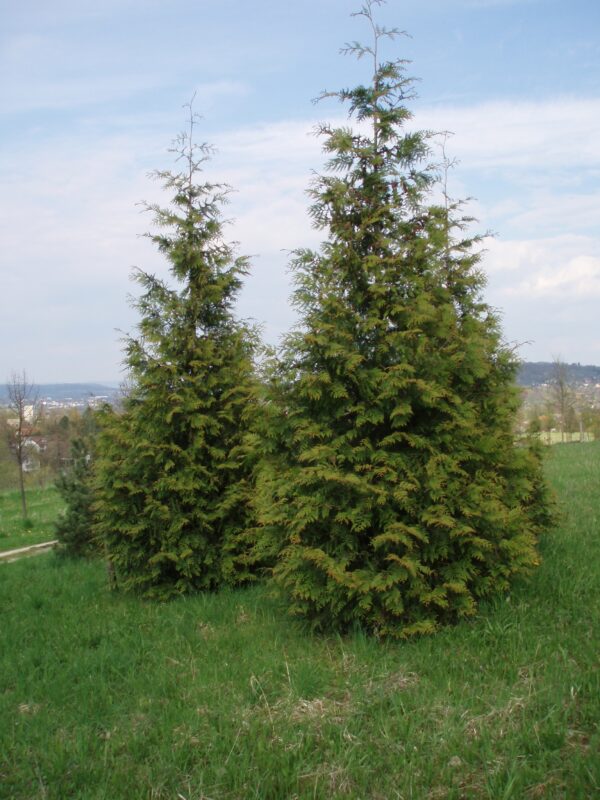
The Western Red Cedar (Thuja plicata) is a stunningly versatile evergreen known for its aromatic wood and rich aesthetic qualities. This tree can grow at an impressive rate of up to 2 feet annually, achieving heights between 50 to 70 feet at maturity. With its layered branches and blue-green foliage, it adds a unique sense of elegance to any landscape, making it highly desirable among homeowners in zone 5.
These cedars thrive in moist, well-drained soils but are still adaptable enough to tolerate various conditions. In zone 5, the Western Red Cedar’s high tolerance to cold means it flourishes even through brutal winters. One of the most notable features of the Western Red Cedar is its natural resistance to decay, which makes it a popular choice for fencing, outdoor structures, and landscaping features. Moreover, when planted as a specimen or in rows for a hedge, it provides not just beauty but also valuable shelter for birds and small mammals during harsh winters, creating a harmonious ecosystem in your backyard.
Japanese Black Pine
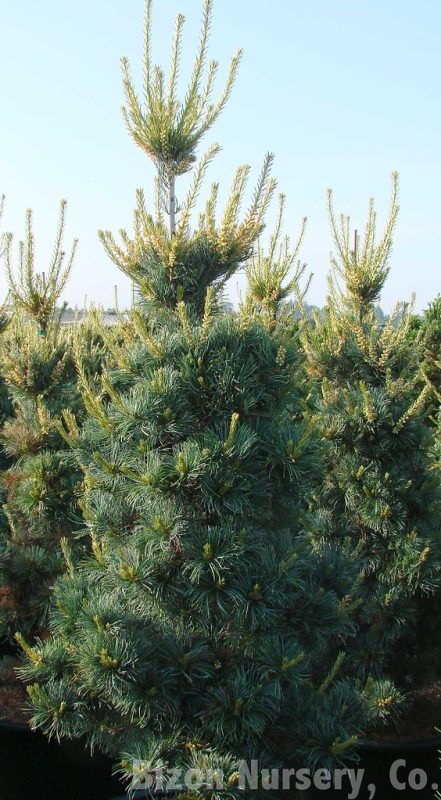
For those seeking a more exotic option, the Japanese Black Pine (Pinus thunbergii) is a wonderful consideration. This fast-growing tree reaches heights of up to 2 feet per year and is known for its distinctive, rugged bark and long, slender needles. While it can grow to heights of 30 to 50 feet, its growth habit may be influenced by pruning and environmental conditions.
Best suited to sandy soils, the Japanese Black Pine is highly resilient, tolerating poor soils and coastal winds. In zone 5, where winter conditions can be challenging, this species adapts well to cold temperatures and is less susceptible to winter burn, which is a common problem for some evergreens. Maintenance of this pine is relatively low-key; it requires little more than periodic pruning to shape its growth and encourage a more compact form. Its classic appearance mimics a bonsai look, ideal for ornamental gardens or as a standout specimen in larger landscapes. Wildlife is also attracted to this tree, making it a fantastic addition for gardeners who appreciate natural beauty and biodiversity.
Rocky Mountain Juniper
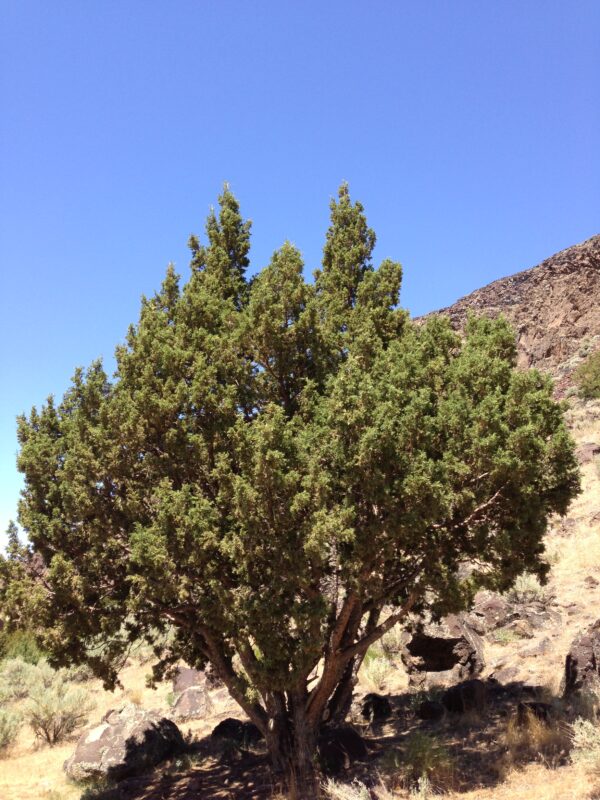
For gardeners who prefer a more compact evergreen, the Rocky Mountain Juniper (Juniperus scopulorum) is an excellent choice. This species typically grows 1 to 2 feet per year and is characterized by its upright, columnar form and striking blue-green foliage. The Rocky Mountain Juniper is ideal for smaller spaces and can serve as a natural privacy screen or backyard accent.
Adaptable to various soil types and conditions, including drought, the Rocky Mountain Juniper thrives in the well-drained soils common in much of zone 5. One of its unique qualities is its ability to withstand both heat and cold, making it an excellent choice for diverse climates. The berries produced by this juniper are highly attractive to birds and other wildlife, adding an extra layer of interest in your landscape. Furthermore, its resistance to pests and diseases makes it a worry-free option for gardeners looking for a low-maintenance alternative to traditional hedges.
Cherry Laurel
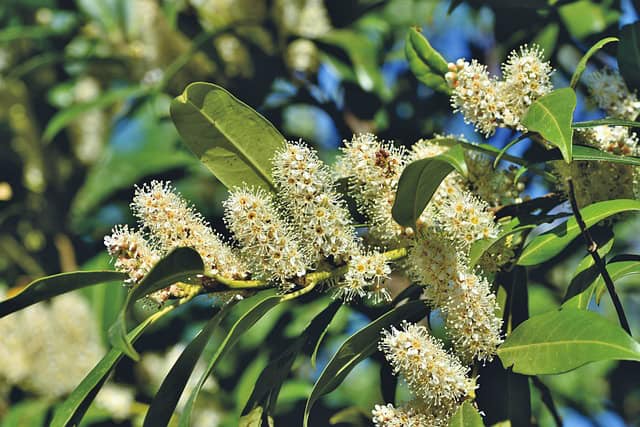
While not a conifer, the Cherry Laurel (Prunus laurocerasus) deserves mention as a fast-growing evergreen shrub that thrives in zone 5. This versatile plant can grow up to 2 feet per year and offers glossy, evergreen leaves that keep gardens looking vibrant through every season. With its potential mature size of 10 to 15 feet tall and about 8 feet wide, it can create lush, green backdrops or privacy hedges.
Cherry Laurels are incredibly adaptable, tolerating shade better than many other evergreens, making them a particularly good choice for those with less-than-sunny spots in their gardens. In zone 5, they thrive under various soil conditions, although they do prefer well-drained soil enriched with organic matter. Their dense growth habit makes them perfect for creating privacy hedges or borders, effectively shielding properties from noise and wind. The beautiful white flowers produced in the spring offer visual appeal and attract pollinators, enhancing the biodiversity of your garden and supporting the local ecosystem.
Grand Fir
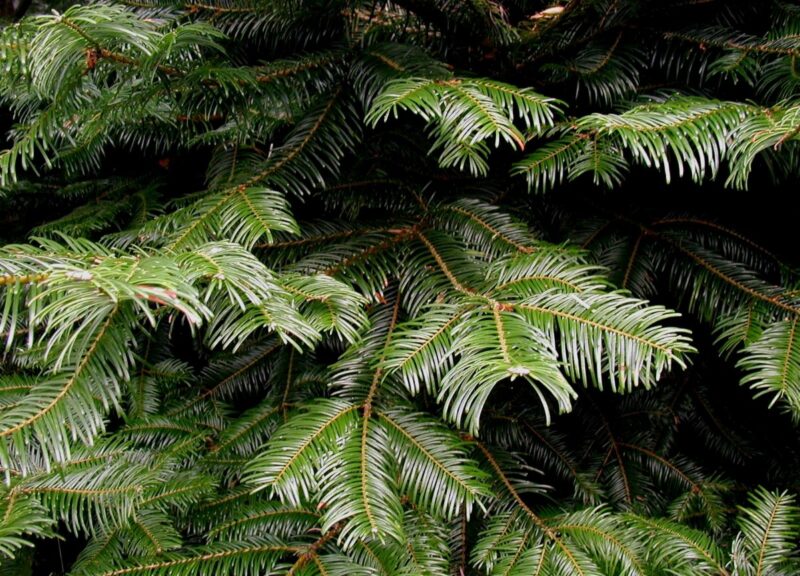
The Grand Fir (Abies grandis) is a magnificent option for fast-growing evergreens in zone 5. Capable of achieving 2 to 3 feet of growth each year, this conifer can grow up to 100 feet tall and 40 feet wide at maturity. Its elegant, conical shape and soft, fragrant needles create a majestic look while enriching your yard with greenery year-round.
Ideal for larger properties, the Grand Fir adapts well to various soils and moisture levels, although it thrives in fertile, well-drained areas. In colder temperatures typical of zone 5, the Grand Fir exhibits remarkable cold hardiness, allowing it to withstand harsh winter conditions. One of the standout features of this tree is its resilience; it can endure strong winds and heavy snow loads, which adds to its robustness as a landscaping choice. The unique aroma emitted from its needles adds an earthy scent to the garden and attracts a variety of wildlife, such as birds and small mammals. Therefore, integrating the Grand Fir into your landscape enhances both aesthetics and ecological diversity.
Taylor Juniper
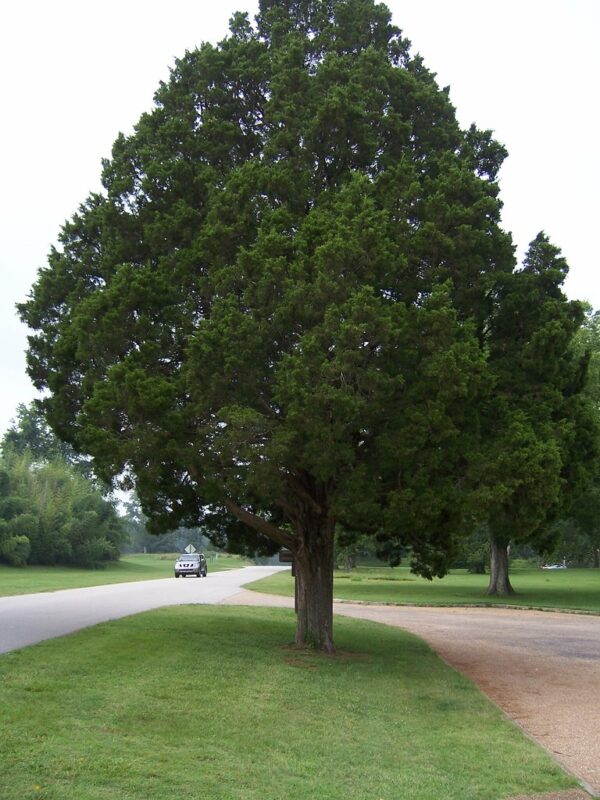
If you are searching for a distinctively narrow evergreen, the Taylor Juniper (Juniperus virginiana ‘Taylor’) is an excellent choice. This fast-growing tree is known for its tall, slender profile, typically reaching 15 feet tall and only 3 to 4 feet wide when mature. It can grow about 1 to 2 feet per year, making it ideal for narrow yards or creating visual separation between areas in your garden.
The Taylor Juniper exhibits beautiful blue-green foliage that provides year-round interest and texture. In zone 5, this juniper species is particularly resilient, capable of thriving in a range of soil types, including rocky or sandy soils. It is drought-tolerant once established, requiring little upkeep, making it an excellent low-maintenance option for busy homeowners. Furthermore, it attracts pollinators and offers food and shelter for birds, enhancing your garden’s biodiversity. With its unique profile and adaptability, the Taylor Juniper is a versatile addition to various landscape styles, contributing beauty and functionality to your outdoor space.
American Pillar Arborvitae
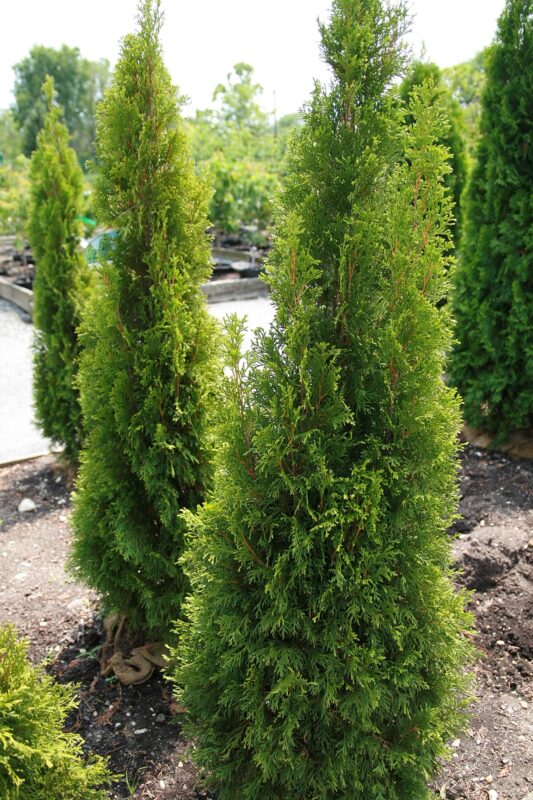
Rounding off our list is the American Pillar Arborvitae (Thuja occidentalis ‘Emerald Green’). This narrow, upright evergreen is an ideal option for homeowners looking to create a formal hedge or screen. With an impressive growth rate of approximately 2 to 3 feet annually, it can reach heights of up to 15 feet, maintaining a minimal width of 3 to 4 feet, making it perfect for restricted spaces.
The American Pillar Arborvitae features rich green foliage that has a soft, feathery texture, providing an elegant look in your landscape. It thrives in various soil types applicable to zone 5, ranging from acidic to neutral soils, requiring minimal maintenance once established. This species is exceptionally cold-hardy, flourishing even in the coldest of winters; additionally, it is adaptable, able to handle both full sun and partial shade conditions. Whether planted in a row for an effective privacy screen or used individually as a striking focal point, this evergreen is sure to impress with its longevity and rapid growth.


